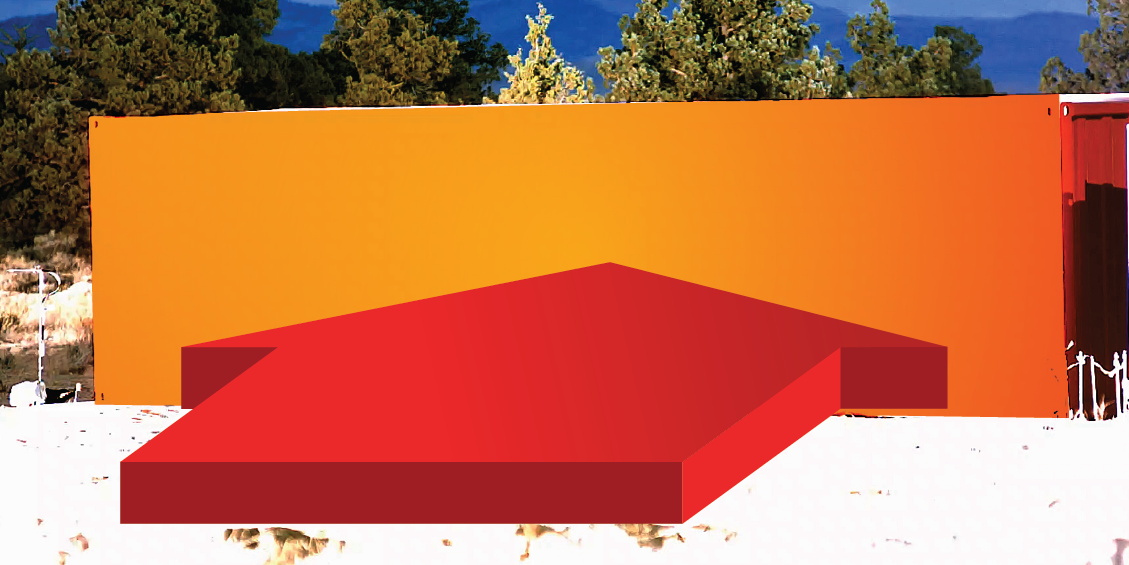Blast loads are something we talk about at RedGuard. We write about their effects and protecting yourself and your team from the damage they cause. The term likely comes up more in our industry than in the course of normal conversations. At RedGuard, our business is safety; and explosions and the blast loads that come with them can be deadly. It’s our job to help people survive the destruction caused by high blast loads.
what exactly are we talking about when we refer to a blast load?
Simply put, it is the load applied to a structure from a blast wave that comes immediately after an explosion. It is the combination of overpressure and either impulse or duration. A high blast load can cause catastrophic damage to a building, both internally and externally, and can be fatal to building occupants.
A blast load determines the building’s response, which tells you the damage level to expect after an explosion. Response levels have been defined by the American Society of Civil Engineers (ASCE) as Low, Medium, and High, corresponding to the amount of damage observed after a blast event. For example:
- Low response - the building may have a small amount of damage, but can still be used. There may be repairs required to ensure the structural envelope is intact.
- Medium response - the building will have widespread damage and can not be used until it is repaired. The cost of repairs may be significant.
- High response - the building’s structural integrity is compromised and it may collapse. The cost of repairs will be similar to the total replacement of the building. High response buildings should not be used by occupants in a hazardous area, since severe injury or loss of life is possible.
How do you protect against high blast loads?
To protect against high blast loads, companies in the petrochemical industry have relied on blast-resistant buildings, which are available in many sizes and configurations. The buildings are so versatile that they’ve even seen use outside that industry by government and military organizations, as well as private security firms.
Other industries are now beginning to seek out the safe shelter of modular steel blast-resistant buildings. Due to their modular nature and high adaptability, blast-resistant buildings can be used in practically any setting with a hazard zone, for both temporary and permanent placement.
How are blast-resistant modular buildings constructed with regard to blast load?
When it comes to constructing the best buildings for safety against high blast loads, there are a few materials that come to mind. They can be concrete, built as traditional brick-and-mortar buildings, concrete modular buildings, or there are several kinds of steel modular buildings.
Of all of the materials that can be used to construct a blast-resistant building, the best material for protection against high blast loads is steel.
How does a steel blast-resistant building protect against high blast loads?
It’s important to remember that not all steel blast-resistant buildings are the same. To be effective, and provide the best protection, steel blast-resistant buildings should be built with multiple components in place to protect from the blast load, this concept is known as redundancy. Thick steel walls and ceiling, with heavy blast-resistant doors, on top of a tightly spaced frame made of steel beams, make up this redundant system.
The frame itself, with its closely spaced beams, is also redundant. The idea being that if one beam in the frame were to fail, there’s another closeby to handle the blast load.
Another protection offered by steel is flex, also known as dynamic load transfer. The closely placed structural members in that frame also help to evenly distribute the blast load, which limits the amount of flex, since too much of it would be a problem.
When a blast load delivers its blast wave in the milliseconds after an explosion, the blast wave hits the side of the building and there are a few things that could happen, depending on the type of building:
- In a concrete building, there is no “give.” The material is designed to be strong but it is unmoving, so the blast wave may impact the side and pass over, then focusing its full energy on the building’s joints or connection points. If the blast load is strong enough, and the conditions are right, the concrete could crumble.
- In a steel building, flex can be observed. This occurs when the blast wave impacts the building, and before it passes over, the side of the building absorbs the impact of the wave by bending a small amount and then flexing back into place. The amount of movement is sometimes so small and happens so fast that it can’t even be noticed by the naked eye. With this type of design, staging the blast-resistant building may dictate that a small amount of space (usually about 2”) is left between the wall and any large pieces of furniture, like desks. This is a small amount of space to give up for a building that will cost less, take less time to build, and provide equal, or more, protection.
Tests Against High Blast Loads
When it comes to protection against high blast loads, you shouldn't leave anything to chance. When buying a blast-resistant building, it's pretty standard to ask questions. Be sure to ask the right questions. Leave no stone unturned, kick the tires, do whatever it takes. (And honestly, getting questions answered should not be difficult!) Be sure to ask if the modules were designed and tested by industry experts. Find out if the building will save lives at the level your site requires.
One thing that differentiates RedGuard from other blast-resistant building manufacturers is that we were the first company to successfully blast test our designs, and then make the results of those tests publicly available. We've continued to improve upon our designs and do further blast testing on subsequent designs. In 2020, we did a field test of our newest blast-resistant design using 6000 lbs of ANFO. It not only passed, but it passed as a low response level rating, the safest designation a blast-resistant building can earn.
Learning more about protection from high blast loads
Now that you know about the scale of damage that can be caused by explosions and their blast loads, it’s a great time to start thinking about protecting yourself, your team, and your assets. We’ve created the industry’s only guide to blast-resistant buildings - it should help you get a jump start in creating the safest possible environment for your team.
Carreen Gibbons
Carreen Gibbons is the Communications Specialist at RedGuard. With a natural curiosity toward technical subjects and a love of learning new things, she writes content for the SiteBox Storage and RedGuard websites and spends her days learning new things about the industries that the companies serve.



